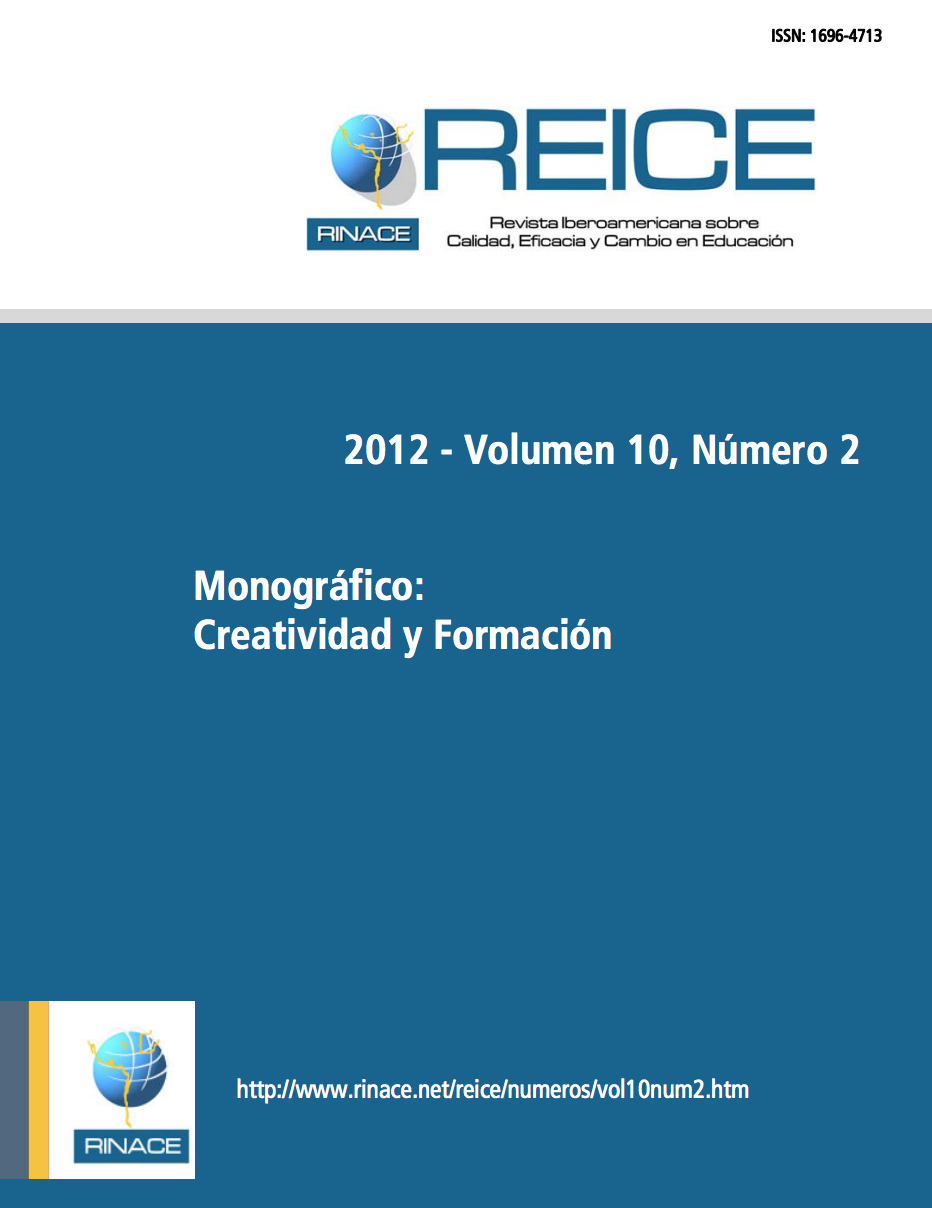The Professor of Mathematics Education and Creativity of Students from Early Childhood
Keywords:
Creativity, mathematics, mathematical literacyCopyright (c) 2016 REICE. Revista Iberoamericana sobre Calidad, Eficacia y Cambio en Educación

This work is licensed under a Creative Commons Attribution-NonCommercial-NoDerivatives 4.0 International License.
Abstract
With this work we try to analyze the importance of mathematical Childhood Education Teacher in order to foster creativity in Mathematics, its students, from the earliest ages. This will begin signaling when education can be considered creative. It argues the importance of a teacher has a good background in mathematics to teach children from kindergarten, some concepts of the discipline. We study the relationship that may exist between the mathematical training of Professor and creativity that is able to transmit to their students, and use the same, trying to rediscover some mathematical concepts. It concludes by analyzing the importance of mathematical training of Professor of Early Childhood Education for use fluently creative methodology techniques with children in Math.
Downloads
References
Abellanas, P. (1967). Magnitudes de la Matemática del Bachillerato. Gaceta Matemática, XIX, 7 y 8.
Alberti, M. (2010). La creatividad en Matemáticas. Madrid:Real Sociedad Matemática Española.
Casas, J. (2000). La Creatividad en la Educación Infantil, Primaria y Secundaria. Madrid: Eos.
De Guzmán, M. (2006). Para pensar mejor: desarrollo de la creatividad en Matemáticas. Madrid: Pirámide.
Instituto Nacional de Calidad y Evaluación (2003). http://www.ince. mec.es/tim.ss/global.htm.
OCDE (2004). Marcos teóricos de PISA 2003. Comentarios y destrezas en Matemáticas, Lecturas, Ciencias y Solución de problemas. Madrid: MEC-INECSE.
OCDE (2005). Informe PISA 2003. Aprender para el mundo del mañana. Madrid: Santillana.
OECD (2004). Learning for Tomorrow´s World. First Results from PISA 2003. París: OECD.
OECD (2005). Are Students Ready for a Technology-Rich World? What PISA Studies Tell Us. París: OECD.
OCDE (2006). PISA 2006. Marco de la evaluación. Conocimientos y habilidades en Ciencias, Matemáticas y Lectura. http://www.ince.mec.es/pub/pubintn.htm.
López, J.A. y Moreno, M. L. (1997). Resultados de Matemáticas. Tercer Estudio Internacional de Matemáticas y Ciencias (TIMSS). Ministerio de Educación y Cultura. Secretaría General de Educación y Formación Profesional.
Magisterio Español (2010). http//:www.magisnet.com/noticia/7031 Alumnos/resultados-pisa-2009-sit%C3%BAan-espa%C3%B1a-481-puntos-com prensi%C3%B3n-lectora-12-debajo-promedio-ocde.html.
Ministerio de Educación, Cultura y Deportes (2010): http://www.educacion.gob.es/horizontales/prensa/notas/2010/12/informe-pisa.ht
Ministerio de Educación y Ciencia (1984). Diseño Curricular Base. Educación Infantil. Madrid: Ministerio de Educación y Ciencia.
San Martín, R. (2012). Más cerca de la creatividad que de los números. En http://weblog.mendoza.edu.ar/matematica/archives/003571.html.
Sánchez Segura, Mª D. (2008). Una visión creativa de las Magnitudes y su Medida en Educación Infantil. Tesis Doctoral, Universidad de Málaga.
Sánchez Segura, Mª D. (2011). Un enfoque creativo de las Magnitudes y su Medida para Educación Infantil. Madrid: Dykinson.
Sánchez Segura, Mª D. (2011). Las Magnitudes y su Medida: un enfoque creativo. Saarbrücken: Editorial Académica Española.
Wonka Pistas (2008). http://wonkapistas.blogspot.com/2007/11/primeros-resultados-del-informepisa.html.
